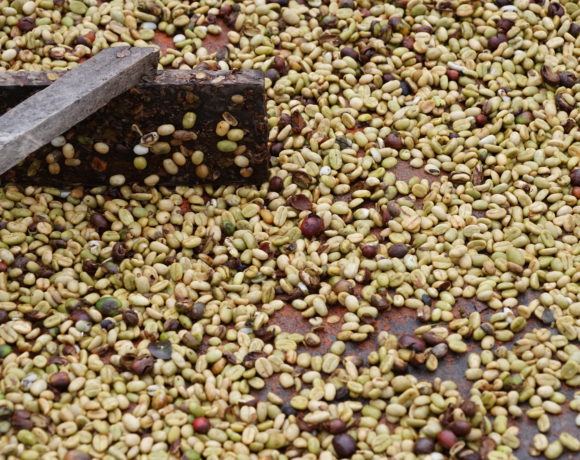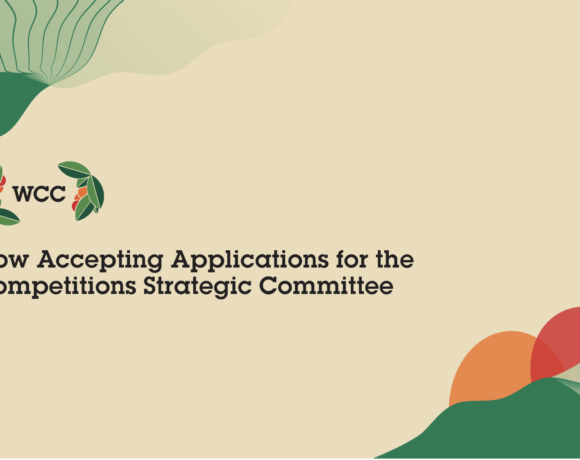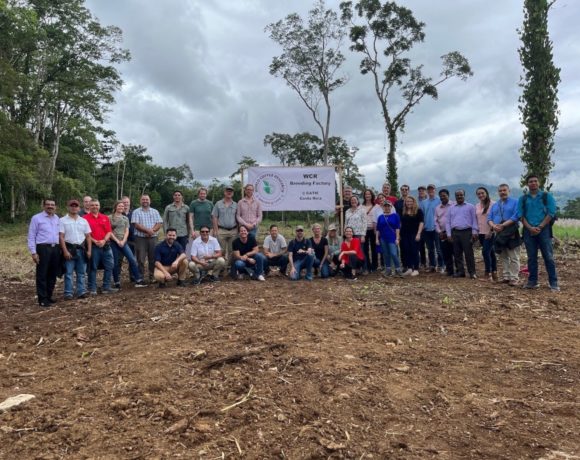A cup of coffee has never been simply a cup of coffee. The history brewed in this humble cup is virtually as rich as the liquid itself. The cultural impact this cup has exerted on is far greater than we could possibly imagine.
Since the 15th century, coffee has become a beloved drink around the world. Over a hundred countries and millions of people consume coffee. It has been one of the very few beverages that have successfully created a communal culture globally. But what coffee means to different nations varies considerably. It is interesting to find that the values related to coffee are not clearly linked to the extent that it is consumed or produced. In some countries, coffee earns its prized place in the culture and has become part of national identity. While in some other regions, coffee has only been a matter of life necessity. Why do these differences exist?
Let’s take a sip of this humble cup. It would be exciting to explore a beverage – coffee as a component in national identity, from perspectives of histories and life experiences.
In the world’s top coffee consuming nations…
How does coffee become rooted in these “unexpected” places which are far away from the coffee belt?
If you have ever read Swedish writer Stieg Larsson’s Millennium, you might be impressed by the amount of coffee drinking as he described. Could anyone possibly take that great volume of coffee in their daily lives? As was stated by the International Coffee Organization, it may come as a big surprise to learn that all five of the Nordic nations make the top six of the world’s leading coffee consuming countries, with Finland ranking first reaching 12 kilograms per capita in 2017 and Norway placing in the second with 9.9 kilograms, followed by Iceland with 9 kilograms per person.
Coffee culture dominates in Scandinavia Though accounting for only 0.3% of the world’s population, the Nordic region contributes 5.5% to the global annual coffee consumption. What bred the rich coffee culture? According to Fritz Storm, former World Barista Champion from 2002 and founder of “Fritz Storm ApS” Consultant Company, coffee arrived at Denmark in the 16th century. “It was for the first many years only for the rich people and also used as medicine. People at that time drank tea.” Storm told CTI, “In the beginning of the 18th century coffee came to all the farmers which by far were the biggest group of people in Denmark, and from that time, Denmark changed from tea drinkers to coffee drinkers.”

Interestingly, religion made a big difference to boost coffee culture in Scandinavia. Kirkekaffe, meaning “church coffee”, introduced the habit of drinking coffee with cakes after every service which was host by the clergy and parishioners. It somewhat acted as a place for social gatherings and helped establish relationship between the church and its congregations. The tradition continues and has been part of the Nordic coffee culture.
You’ll find that Scandinavian nations have surprisingly dominated the coffee events and barista championships right from the start. In addition to the fact that they create the rules and the mindset, the rich coffee culture nurtures and supports these people that they have been keeping focused and precise in what they do.
A drink for everyone and for all occasions “Would you like a cup of coffee?” It is most likely one of the most used sentences in Nordic hospitality, shared by Storm, “we almost every day invite people in for coffee”. In Iceland, Tiú dropar, translated to “ten drops” meaning a small cup of coffee, is offered by the host to a visitor who is only stopping by for a short time. Likewise, similar custom in Sweden, Denmark and Norway is called kaffetår, meaning a small drink of coffee.

We can see how coffee is intertwined with Scandinavians’ everyday life. There is always a break for a thirst for coffee, such as Swedish kaffedags and Icelandic kaffitími. And basically, people drink coffee all day long. “It is not like the Italians where they drink coffee at specific times during the day, and they also have their specific coffee type for different times during the day.” said Storm. Moreover, he points out that there are not many differences from country to country when it comes to Nordic coffee culture. Coffee is such an integral part of national identity and has well been integrated into the Nordics’ experience.
In the world’s largest coffee producing nations…
It is surprising how different ways they are that these largest producers embrace coffee as part of their national identity.
Brazilians’ “easy” love for coffee If ever a country deserved fame for coffee, it would be Brazil. Since it became the world’s biggest coffee producer in the 19th century, it has held the position for over 150 years! In the remarkable year of 1906, Brazil contributed over 80% to the world’s coffee supply. Today, it is still home of 35% of coffee consumed globally. As released by Statista, Brazil, the top coffee producing country, produced around 61.7 million 60 kilogram bags of coffee in 2018.
Most of us think it is safe to say that Brazil is a nation with vibrant coffee environment. Yet, few people there identify their own diverse national culture with coffee. The fact, however, is that people usually don’t understand coffee and they cannot afford the really high-quality goods either. Specialty coffee in Brazil was known as “exporting kind” for many years. “As I grew up, I always heard that all the good stuff was exported and we only had the rest of the production.” said Daniel Munari, owner of Royalty Quality Coffee and third-place winner of 2018 Brazil Brewers Cup. On one hand, the taxes generated from exported coffee made up a primary proportionof state income. On the other hand, the coffee price was set by the stock market for a long time and thus there was no incentive for producers to work for specialty type.
It sounds like coffee is more as an embarrassment in Brazil. In Munari’s opinion, it happens because producing coffee in Brazil is “easy” when compared to other countries. It is a blessed land with just fine climate and soil, making it produce coffee with no major effort. This can be a problem, though. There was no motive to change. Meanwhile, given the illegality of importing coffee, most Brazilians had no chance to taste differentbeans from other countries.

Coffee is definitely an important part of every Brazilian’s life. It is essential to have a cup of morning coffee as they wake up, which is called Café da Manhã. The question is, however, people usually do not care much about coffee the quality.
Munari told CTI, “as we have so much coffee and it is so accessible, most of the Brazilians take it for granted and do not appreciate as we should.”
But, the situation is changing. With an increasing number of producers getting more and more involved in the market of specialty coffee and with improving techniques, we can expect more from Brazilian coffee. And we believe the national image of coffee in Brazil will improve earning it a great reputation.
Colombians’ national pride of coffee Following Brazil ranking the second place of the world’s largest coffee producers throughout the 20th century (surpassed by Vietnam to the third place in the beginning of the 21st century), Colombia takes its coffee seriously.
In addition to a significant part of everyday life, coffee also represents livelihoods of the Colombians. During the first decades of coffee’s development, smallholders dominated the country’s coffee-producing sector. Gradually, they came to form a national-level cooperative for their common interests. With a small group of coffee growers, the National Federation of Coffee Growers of Colombia (FNCC) was founded in 1927, to support and protect farmers as well as facilitate coffee growth. The careful management and detailed attention make it possible that coffee plantations become a sustainable part of the country’s landscape. To some extent, coffee growers represent a group of socioeconomic classes in Colombia.
Coffee has become a symbol of state excellence and an integral part of national identity in Colombia. It is not only a national drink which is embraced by ordinary people, but also of economic significance which is highly recognized by the government.
In the world’s leading coffee importing nations…
You would never believe how big a role these nations have played in coffee while supposedly they are known for something else.
Americanized coffee When we talk about American coffee today, we would probably think of a classic image of a big size filtered cup. How did a tiny bean, transplanted from Africa to the Central and South America, turn out to be a symbol of Americanism?
Quite a few Americans began drinking coffee as a behaviour of defiance after the Boston Tea Party, where coffee played a critical role of independence from British colonization and of cultural self-shaping. In the 18th century, tea boycotts stimulated the appetite of the Americans for coffee. Coffee consumption increased greatly at the cost of tea. Then during the Civil War, military campaigns helped assimilate coffee into people’s dietary habit, since the beverage was considered necessary for the troop’s victory. It is said that they would have coffee grinders built into guns that best soldiers would use.

When the war ended, coffee started to seep into civilian life. Furthermore, attributed to Brazil’s independence which allowed it to produce more coffee to the world as well as Northern European immigration to the U.S. predisposed to having coffee, the Americans experienced an unprecedented growth of coffee drinking in the 19th century.
By 1990, the U.S. became the greatest coffee market around the globe and kept ahead since then. According to Statista, the States imported about $5.72 billion worth of coffee in 2018, winning it the crown of coffee importer worldwide.
Coffee has become such a common beverage in America. When talking with Kyle Ramage, 2017 U.S. Barista Champion and Owner of Black & White Coffee Roasters, he said, “We just drink tons of it. I can’t imagine a day my Dad didn’t drink coffee when I was a kid… It’s like the way Italians think about espresso is how Americans think about filter coffee.” Coffeehouses are a large part of American culture. Since the concept of “third place” was invented in the late 90s in the U.S., its cultural influence seems bigger than ever before. While coffee shop owners are selling time, experience, and services to customers, they enjoy the space, conversation, and interaction. You may find that America has been playing a key role in all three waves of coffee. Still, as Ramage pointed out, any wave is just one expression of what it means to drink coffee in America, and all three waves co-exist.
Hence, we can see how coffee has been linked to American state building, society, and globalism.

Germany’s unexpected affection for coffee It may surprise us that Germany, better known for their fantastic beer, is the world’s second-largest coffee importer, right behind the U.S.. The development of coffee had a slow start in Germany. It arrived later at the country compared to most of its neighbors around the Europe. It was not until in 1721 that Berlin opened its first coffee shop to serve the general public. Additionally, as Germany did not possess colonies that could supply coffee to the nation, it had to import coffee at considerable price. During the period of Frederick the Great, coffee was roasted exclusively for the upper class. Till the end of the 19th century, the legal constraints on public coffee consumption was removed, and thereafter coffee demand increased rapidly and coffeehouses began gaining popularity.
Kaffeeklatsch, a special German word referring to “gossip over cups of coffee”, originated around the 1900s as a coffee ritual that women met their friends, drank coffee, and chatted. The habit is still going strong today. Though a late starter, Germany led coffee culture in some ways. Drip coffee was invented in 1908 by a German lady Melitta Bentz. Gottlob Widmann, followed that up by creating the electrical drip brewer in 1954. Coffee today is one of Germany’s nationalbeverages, yet it is seemingly unconsidered to German identity compared to beer, it already spilled over into people’s minds and lifestyles.
For over five hundred years coffee has been linking people of different continents and regions by cultural, religious, trade, and immigration transmission. It is a long-standing manifestation of global connection and local experiences. So a humble cup of coffee, there is a world of history as well as native stories in that noble cup.












NO COMMENT